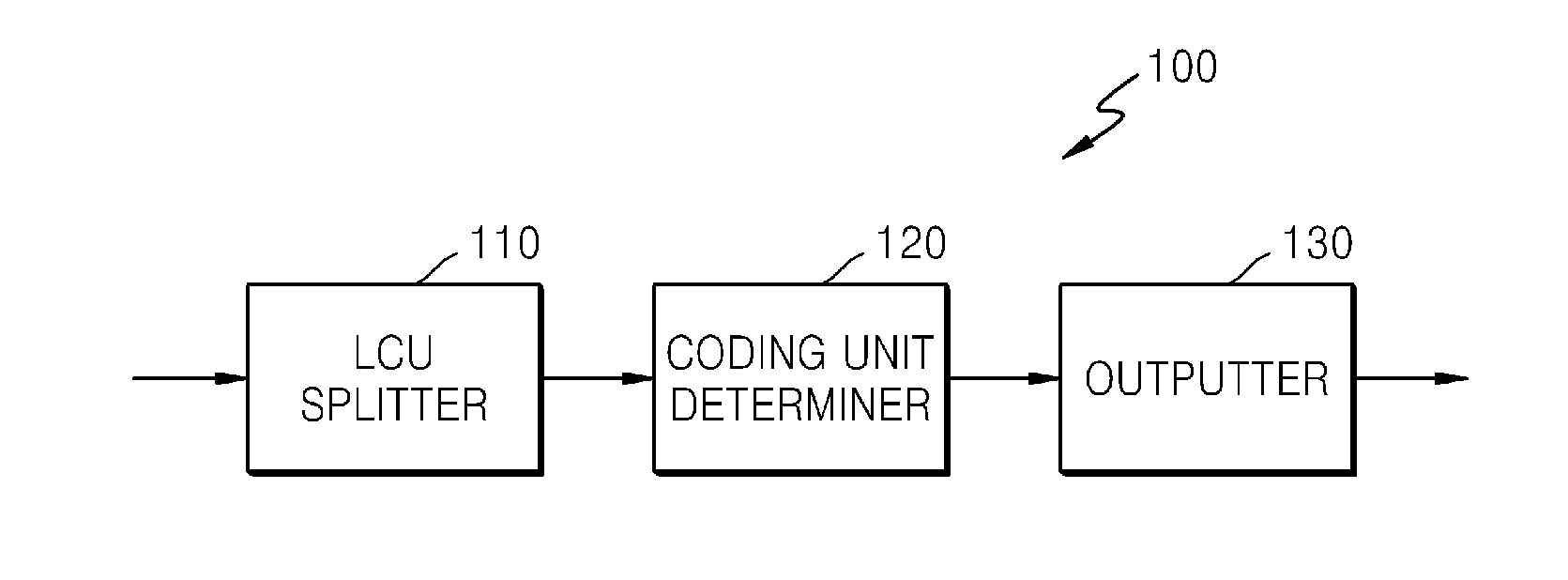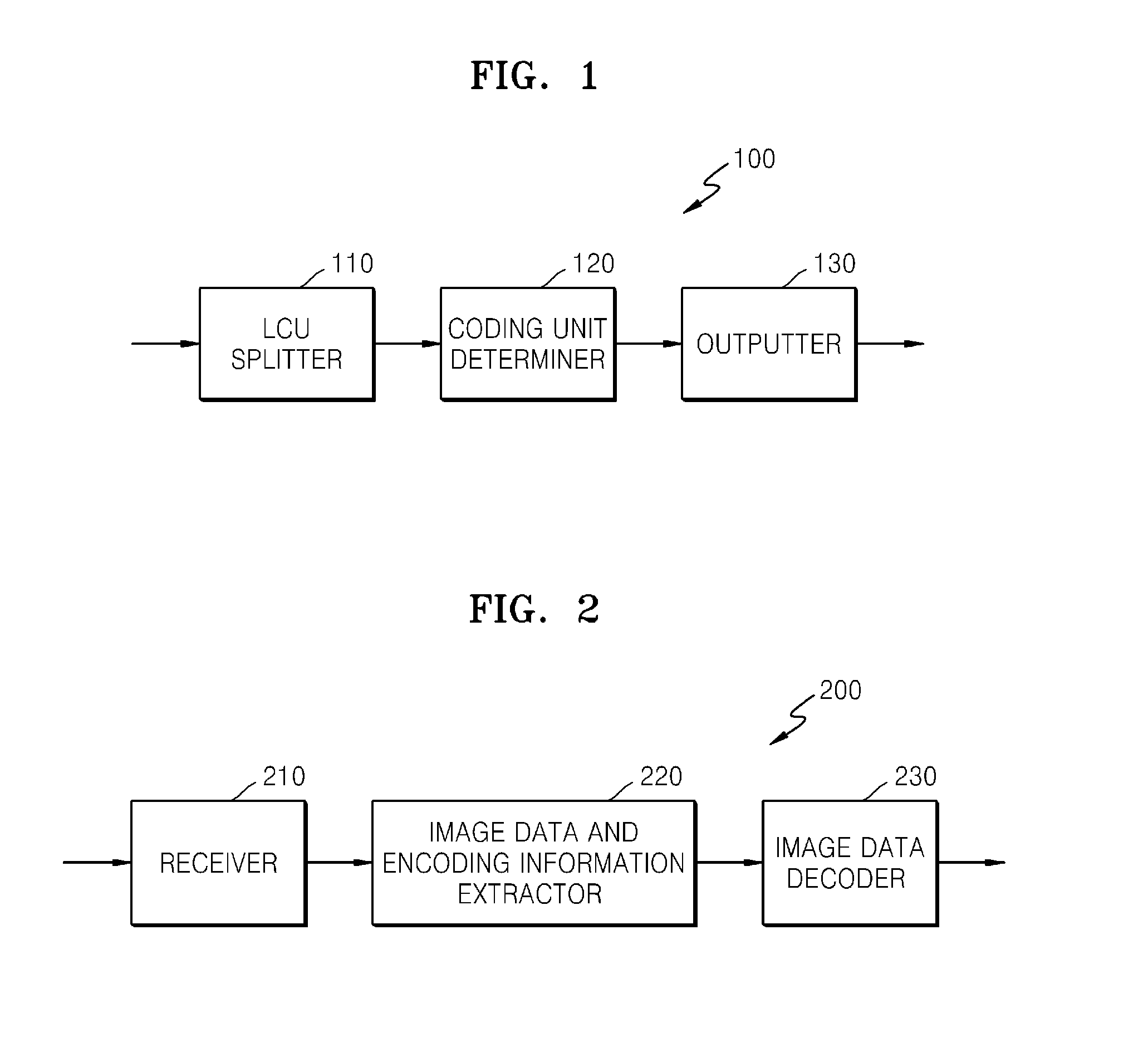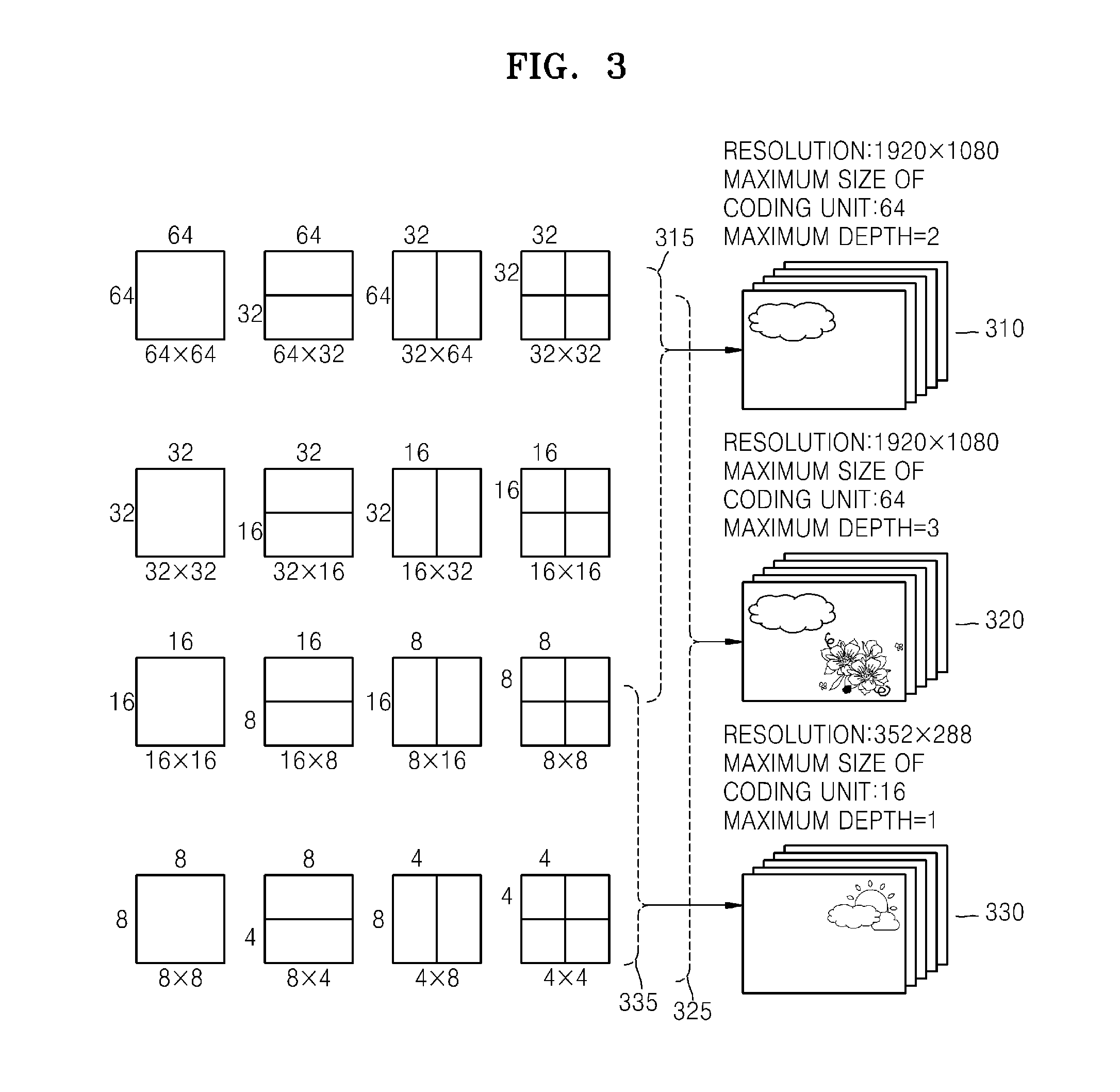Method and apparatus for hierarchical data unit-based video encoding and decoding comprising quantization parameter prediction
a hierarchical data unit and video encoding technology, applied in the field of video encoding and decoding, can solve the problems of loss of information, increased compression rate, and inability to perfectly restore original data
- Summary
- Abstract
- Description
- Claims
- Application Information
AI Technical Summary
Benefits of technology
Problems solved by technology
Method used
Image
Examples
Embodiment Construction
[0043]Hereinafter, the exemplary embodiments will be described in detail with reference to the attached drawings.
[0044]FIG. 1 is a block diagram of a video encoding apparatus 100 according to an exemplary embodiment.
[0045]The video encoding apparatus 100 includes a largest coding unit (LCU) splitter 110, a coding unit determiner 120, and an outputter 130.
[0046]The LCU splitter 110 may split a current picture of an image based on an LCU, which is a coding unit of a maximum size. If the current picture is larger than the LCU, image data of the current picture may be split into at least one LCU. The LCU may be a data unit having a size of 32×32, 64×64, 128×128, 256×256, etc., wherein a shape of the data unit is a square which has a width and length of 2n and is greater than 8. The image data may be output to the coding unit determiner 120 according to each LCU.
[0047]A coding unit may be characterized by a maximum size and a depth. The depth denotes the number of times the coding unit i...
PUM
 Login to View More
Login to View More Abstract
Description
Claims
Application Information
 Login to View More
Login to View More - R&D
- Intellectual Property
- Life Sciences
- Materials
- Tech Scout
- Unparalleled Data Quality
- Higher Quality Content
- 60% Fewer Hallucinations
Browse by: Latest US Patents, China's latest patents, Technical Efficacy Thesaurus, Application Domain, Technology Topic, Popular Technical Reports.
© 2025 PatSnap. All rights reserved.Legal|Privacy policy|Modern Slavery Act Transparency Statement|Sitemap|About US| Contact US: help@patsnap.com



